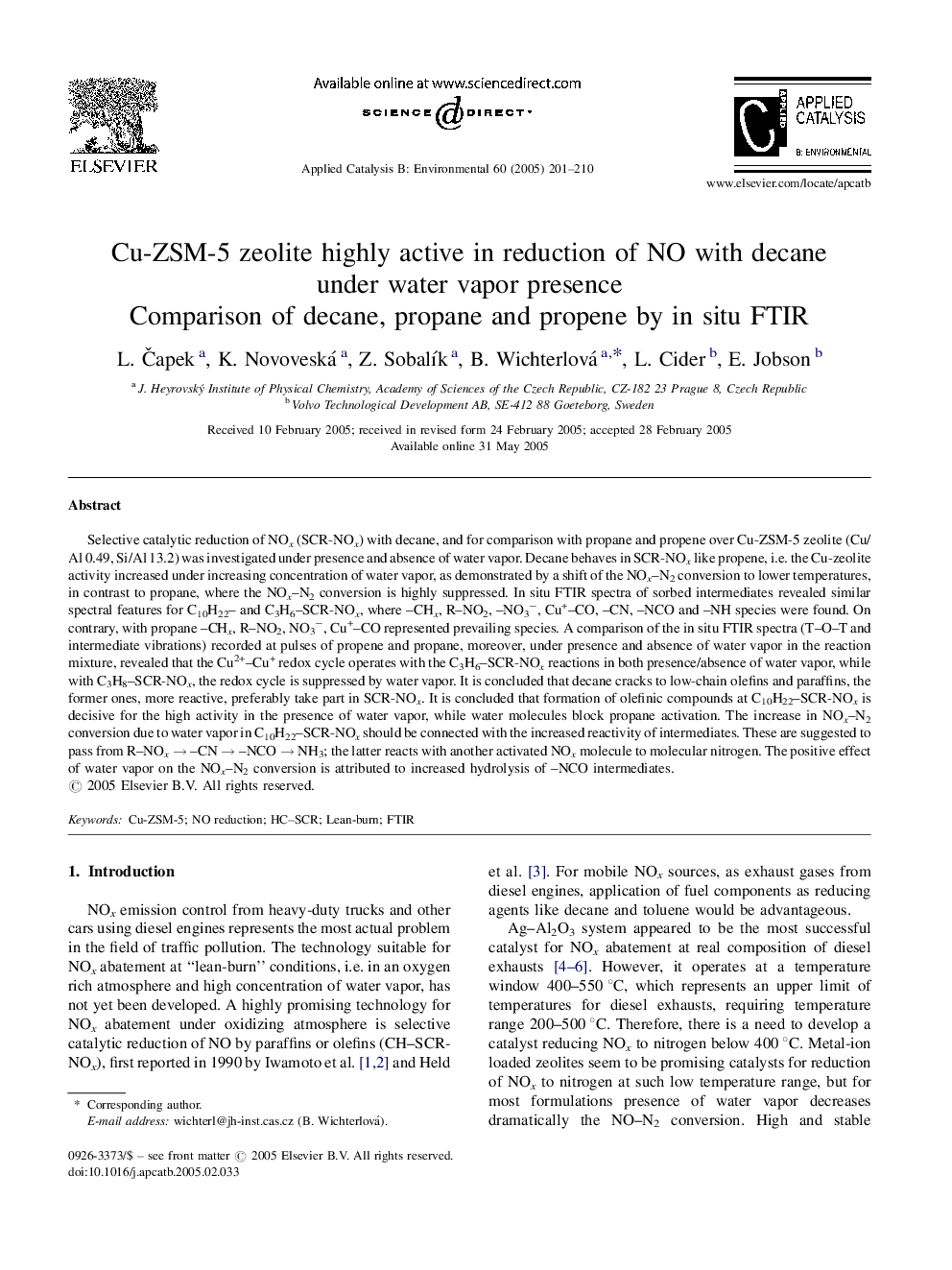| کد مقاله | کد نشریه | سال انتشار | مقاله انگلیسی | نسخه تمام متن |
|---|---|---|---|---|
| 9609803 | 46558 | 2005 | 10 صفحه PDF | دانلود رایگان |
عنوان انگلیسی مقاله ISI
Cu-ZSM-5 zeolite highly active in reduction of NO with decane under water vapor presence
دانلود مقاله + سفارش ترجمه
دانلود مقاله ISI انگلیسی
رایگان برای ایرانیان
موضوعات مرتبط
مهندسی و علوم پایه
مهندسی شیمی
کاتالیزور
پیش نمایش صفحه اول مقاله

چکیده انگلیسی
Selective catalytic reduction of NOx (SCR-NOx) with decane, and for comparison with propane and propene over Cu-ZSM-5 zeolite (Cu/Al 0.49, Si/Al 13.2) was investigated under presence and absence of water vapor. Decane behaves in SCR-NOx like propene, i.e. the Cu-zeolite activity increased under increasing concentration of water vapor, as demonstrated by a shift of the NOx-N2 conversion to lower temperatures, in contrast to propane, where the NOx-N2 conversion is highly suppressed. In situ FTIR spectra of sorbed intermediates revealed similar spectral features for C10H22- and C3H6-SCR-NOx, where -CHx, R-NO2, -NO3â, Cu+-CO, -CN, -NCO and -NH species were found. On contrary, with propane -CHx, R-NO2, NO3â, Cu+-CO represented prevailing species. A comparison of the in situ FTIR spectra (T-O-T and intermediate vibrations) recorded at pulses of propene and propane, moreover, under presence and absence of water vapor in the reaction mixture, revealed that the Cu2+-Cu+ redox cycle operates with the C3H6-SCR-NOx reactions in both presence/absence of water vapor, while with C3H8-SCR-NOx, the redox cycle is suppressed by water vapor. It is concluded that decane cracks to low-chain olefins and paraffins, the former ones, more reactive, preferably take part in SCR-NOx. It is concluded that formation of olefinic compounds at C10H22-SCR-NOx is decisive for the high activity in the presence of water vapor, while water molecules block propane activation. The increase in NOx-N2 conversion due to water vapor in C10H22-SCR-NOx should be connected with the increased reactivity of intermediates. These are suggested to pass from R-NOx â -CN â -NCO â NH3; the latter reacts with another activated NOx molecule to molecular nitrogen. The positive effect of water vapor on the NOx-N2 conversion is attributed to increased hydrolysis of -NCO intermediates.
ناشر
Database: Elsevier - ScienceDirect (ساینس دایرکت)
Journal: Applied Catalysis B: Environmental - Volume 60, Issues 3â4, 3 October 2005, Pages 201-210
Journal: Applied Catalysis B: Environmental - Volume 60, Issues 3â4, 3 October 2005, Pages 201-210
نویسندگان
L. Äapek, K. Novoveská, Z. SobalÃk, B. Wichterlová, L. Cider, E. Jobson,